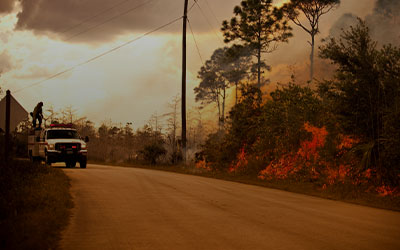Summer has officially arrived – along with higher temperatures and the potential for heat illness, especially for employees who work predominantly outdoors in industries such as construction and agriculture. In 2011, the Occupational Safety and Health Administration (OSHA) launched a Heat Illness Prevention campaign to educate employers and workers on the dangers of working in the heat. Some states have adopted plans for compliance and enforcement of heat illness prevention plans, such as the California Occupational Safety and Health Program (Cal/OSHA) with its Heat Illness Prevention standard.
Viewpoints from Josh Allen
While it’s important to consult state regulations to ensure compliance, these general guidelines, stressed by OSHA, are key to keeping your employees safe from heat-related illness.
Consistent Water Intake
Make sure employees have access to, and drink plenty of, water throughout the day. At least one cup of suitably cool water every 20 minutes is recommended. Avoid energy drinks and other caffeinated beverages in high heat as these contribute to dehydration by increasing the amount of water and salt the body releases.
Rest Breaks
Ensure employees take time to rest and recover from strenuous activity, especially in high heat. The necessity of breaks will vary with the temperature, humidity and intensity of work activity.
Ample Shade
Employees should take breaks in a shaded area. Canopy tents are a great option when a permanent structure is not available. Tents can be erected quickly and provide shade for many employees. Employers should ensure there’s enough shade to accommodate everyone at the job site.
Appropriate Clothing
Encourage employees to wear loose-fitting clothes, preferably of lighter color. Other options like a cooling neck wrap or hat can further assist in staying cool at the job site.
Buddy System
Stress the importance of looking out for one another. Supervisors and employees should know and look out for signs of heat illness among their colleagues and be ready to act as needed.
Acclimatization
The human body needs time to adjust to working hot environments. The National Institute for Occupational Safety and Health (NIOSH) recommends gradually increasing employee exposure time in hot environments over seven to 14 days. New workers will need more time to acclimatize than workers who have already had some exposure. NIOSH also suggests new workers’ schedules should start at 20% of exposure on day one and then increase 20% on each additional day. For experienced workers, start at 50% exposure on day one and work up to 100% by day four.
Heat Illness Training
Ensure employees know and understand your procedures for working in the heat. Good heat illness training will include information on risk factors, the importance of water consumption, different types of heat illness, acclimatization, methods the employer uses to prevent illness, the importance of employees immediately reporting signs of heat illness, responding to symptoms and procedures to contact emergency medical services. We’re here to help!
EPIC offers this material for general information only. EPIC does not intend this material to be, nor may any person receiving this information construe or rely on this material as, tax or legal advice. The matters addressed in this document and any related discussions or correspondence should be reviewed and discussed with legal counsel prior to acting or relying on these materials.
Related Content
Products
Risk Management
Our experienced teams take an enterprise-wide approach, consulting closely with you to identify, analyze and ...
Industries
Agribusiness
The climate of agribusiness is changing, and it is a priority of all those in the industry to be aware of ...
Industries
Construction
A professional team of nationwide specialists dedicated to delivering impactful risk management and insurance ...



